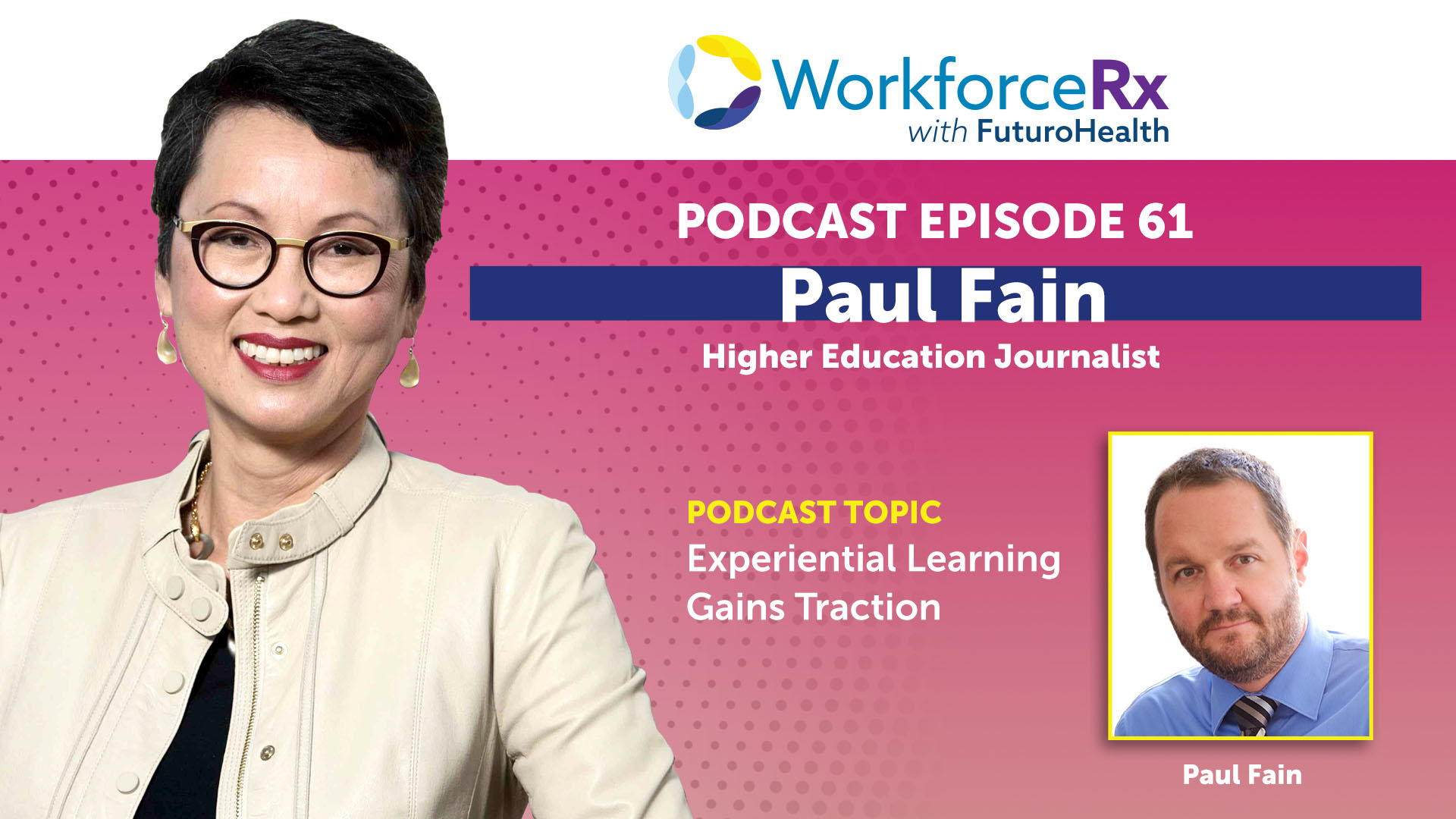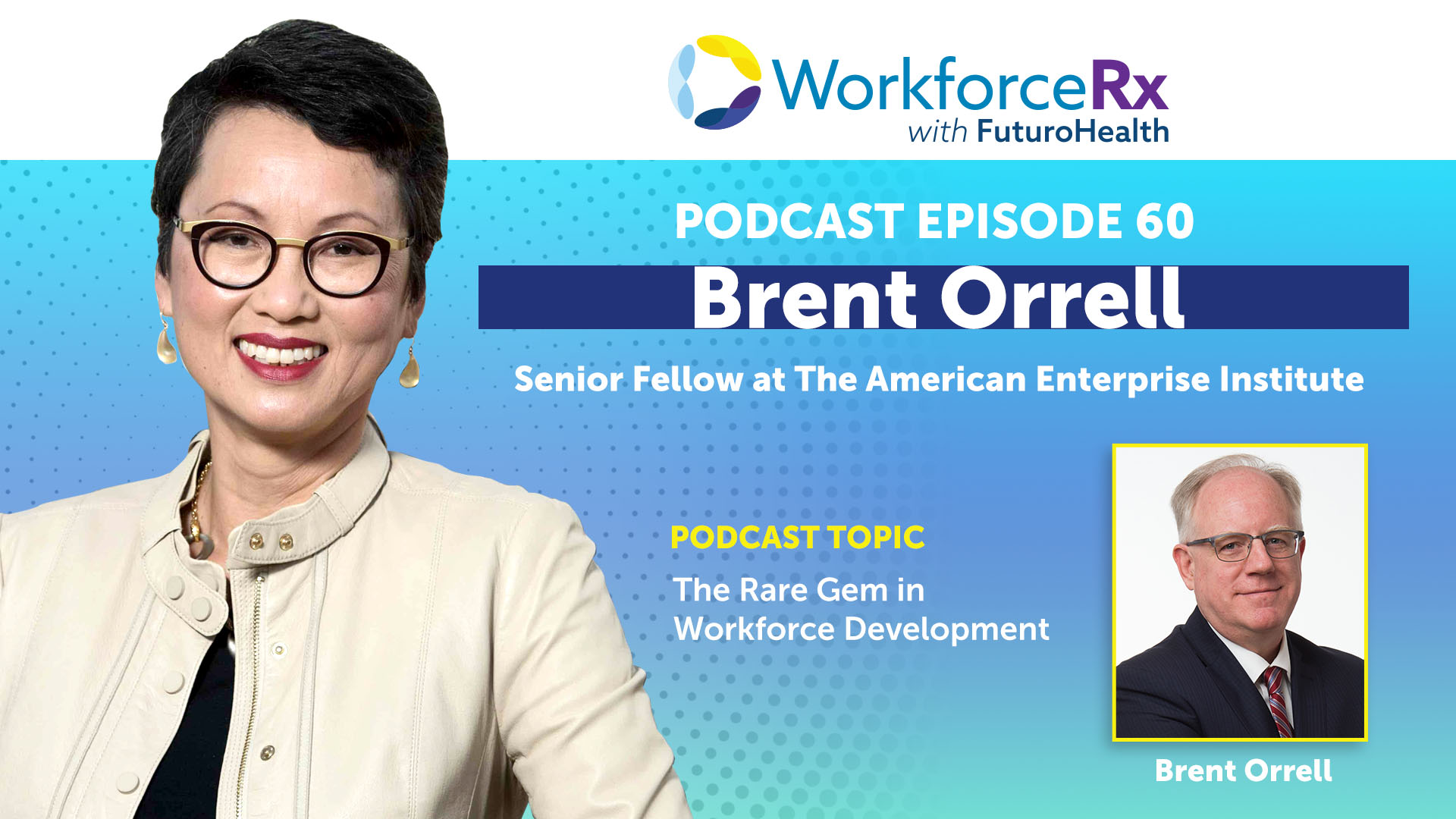“I haven’t really seen that much in my career as a journalist where California and Alabama are rowing in the same direction. I do think workforce development is that rare issue that cuts through some of the partisan noise,” says Paul Fain, a veteran observer of higher education and workforce training. His weekly newsletter, The Job, focuses on the nexus between education and work, so he is always on the hunt for what’s new and interesting in these fields. As he shares with Futuro Health CEO Van Ton-Quinlivan, one area that stands out is the growth in experiential learning and career exploration through simulations and micro-internships. “One company I looked at offers learning simulations to college students that are designed by companies so the student can decide ‘Am I good at this? Do I like this?’” Another area of new energy is based on a very old model: apprenticeships. “Apprenticeships are hot. You’re seeing lots of C-suite excitement about them. That said, we spend a tiny proportion of public funding on apprenticeships relative to traditional higher education.” Overall, Fain senses growing urgency among business leaders that growing income equality is an existential threat to our economy and society, a view he shares. Tune in for a wealth of insights into what Fain calls “one of the biggest stories of my career.”
Continue readingBrent Orrell, Senior Fellow at The American Enterprise Institute: The Rare Gem in Workforce Development
“The evidence is very sparse when it comes to effective practice in the workforce development field,” says Brent Orrell of The American Enterprise Institute. This concerning conclusion comes from the Workforce Futures Initiative, a collaborative project between AEI, the Brookings Institution and the Harvard Kennedy School Malcolm Wiener Center for Social Policy. But it’s not all bad news. The strong exception is sector-based training. “That is one of the rare gems where we can say with relative certainty that if workforce development practitioners do this approach in the right way, they can get good results.” As Orrell explains to Futuro Health CEO Van Ton-Quinlivan, the strength of this model derives from integrating technical skills training with instruction in so-called “soft skills” which are essential to being able to succeed in the workplace. The result is dramatic and continued increases in wages that lead to family-sustaining incomes. Orrell also credits these programs with doing a better job at keeping trainees engaged through to completion than is typically the case at community colleges which, he says, badly need a boost in the number of educational and career advising staff. Be sure to check out this thoughtful discussion on what works in workforce development, the extra responsibility Americans have to put their skills to work at the highest level, and why we shouldn’t be afraid of generative AI.
Continue reading

